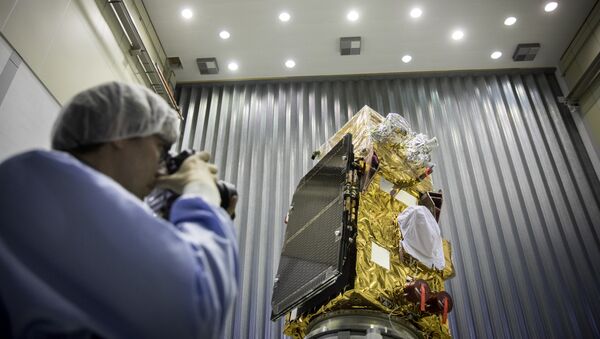New Delhi (Sputnik) — The European Commission and India, on Monday, signed a crucial Earth observation co-operation arrangement, which will provide India with free, full and open access to data from the EU's Copernicus hub on climate change as well as land, ocean, and atmosphere monitoring. The hub also provides support in the forecasting, management, and mitigation of natural disasters.
These services are enabled by the Earth observation data obtained from the six Copernicus Sentinel satellites currently in orbit, as well as a number of contributing missions from other operators.
Yesterday, the European Commission 🇪🇺 @EU_in_India and India’s Department of Space 🇮🇳 @isro signed a landmark Cooperation Arrangement in Bangalore related to sharing of Earth 🌏 observation satellite data 🛰️ https://t.co/lT2EohU6bs
— Belgium in India (@BelgiuminIndia) March 20, 2018
The EU will also provide technical assistance to the Indian Space Research Organization (ISRO) for the establishment of high-bandwidth connections, in particular through the setting up of mirror servers, data storage, and archive facilities. The arrangement will also benefit various government agencies, academia, and the private sector.
"Partner countries can take advantage of Earth observation data as a tool for economic development. This can benefit businesses and entrepreneurs in the EU and partner countries through increased collaboration and partnerships," the European Commission said in a statement.
READ MORE: Space Carsharing: SpaceX Launches Secret US Military Payload With Com Satellite
In return, India will provide the European partners of the Copernicus program with free access to the data gathered by India's own Earth observation satellites. The United States and Australia have a similar arrangement with the EU regarding satellite data sharing while the arrangement with Brazil, Chile, and Columbia was signed on March 8th in Sao Paulo, Brazil.
Despite a wide-ranging Earth observation program, India has used the services of Copernicus twince- first in 2013 when a tropical storm hit the Odisha coast, and second in October 2014 when floods hit the southern state of Andhra Pradesh. The Indian government had accessed the data to assess the damage caused by these natural disasters.


